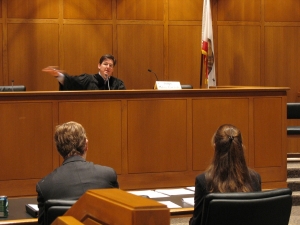By: Joseph S. Jackson & Lauren G. Fasig This article is only available in PDF format. Click here for the full PDF version of this article.


By: Joseph S. Jackson & Lauren G. Fasig This article is only available in PDF format. Click here for the full PDF version of this article.

By: Rachael A. Doyle* Introduction Congress enacted the Comprehensive Environmental Response, Compensation, and Liability Act (“CERCLA”)[1] to address and remedy the improper disposal of toxic and hazardous wastes.[2] Since its enactment, CERCLA has been highly criticized for its ostensibly high transaction costs, its strict liability scheme, and the expensive cleanup costs associated with the program.[3] […]

By: Matthew Alan Cherep* Introduction Nearly one in four American adults under the age of fifty has a tattoo.[1] Modern tattoos may commemorate important events in our lives, like the birth of a child or the death of a loved one; they may signify passionately held beliefs, through a peace sign or a Gadsden Flag; […]

By: Julia Di Vito Introduction On June 17, 2010, the United States Supreme Court overturned more than five-hundred decisions issued by the National Labor Relations Board (“Board”) with one decision. In so doing, the Court also overturned a decision by the United States Court of Appeals for the Seventh Circuit and affected decisions made by […]

By: Michael Selmi* Introduction The Civil Rights Act of 1991 (“CRA”) sought to change the employment discrimination landscape. The CRA overturned or repudiated eight Supreme Court decisions that had narrowed the scope of Title VII in a way that Congress determined was inconsistent with the broad purpose of eradicating employment discrimination.[1] Relatedly, the CRA transformed […]

By: Melissa Hart* Introduction When Congress passed the 1991 Civil Rights Act (“1991 Act”), the new disparate impact provisions of the law were heralded as a victory for civil rights plaintiffs.[1] After all, the statute was enacted in response to the Supreme Court’s cramped, “near-death”[2] interpretation of disparate impact law in Wards Cove Packing Co. […]

By: Roberto L. Corrada* Introduction The standard for voluntary affirmative action[1] under Title VII has been in question in recent years. The last United States Supreme Court opinion to directly address the matter is over twenty years old, and the Court’s composition has changed since then. In the years since the last Title VII affirmative […]

By: Wendy Parker* Introduction The Civil Rights Act of 1991[1] (“Act” or “1991 Act”) was thought to be a victory for employment discrimination plaintiffs—a “dramatic” expansion of their rights.[2] Twenty years later, however, we are told that the news for employment discrimination plaintiffs has gone “from bad to worse.”[3] Employment discrimination plaintiffs should expect defendants […]

By: Pat K. Chew This article is only available in PDF format. Click here for the full PDF version of this article.

By: Andrew L. Berrier* Licensed Application End User License Agreement The Products transacted through the Service are licensed, not sold, to You for use only under the terms of this license, unless a Product is accompanied by a separate license agreement, in which case the terms of that separate license agreement will govern, subject to […]

By: Zoe E. Niesel* Introduction In 1998, a thirty-year drama came to an end when anthropologists at the University of Nebraska agreed to return the skeletal remains of 1702 Native Americans to a coalition of fifteen modern tribes.[1] For the tribes involved, this repatriation represented the end of a long struggle to assert their right […]

By: Kelli A. Alces* Introduction The board of directors has outlived its purpose. The board is theoretically responsible for directing the management of a corporation, for monitoring its senior officers, and for making significant business decisions. The typical directors of the largest multinational corporations devote about seventeen hours per month to the governance of the […]